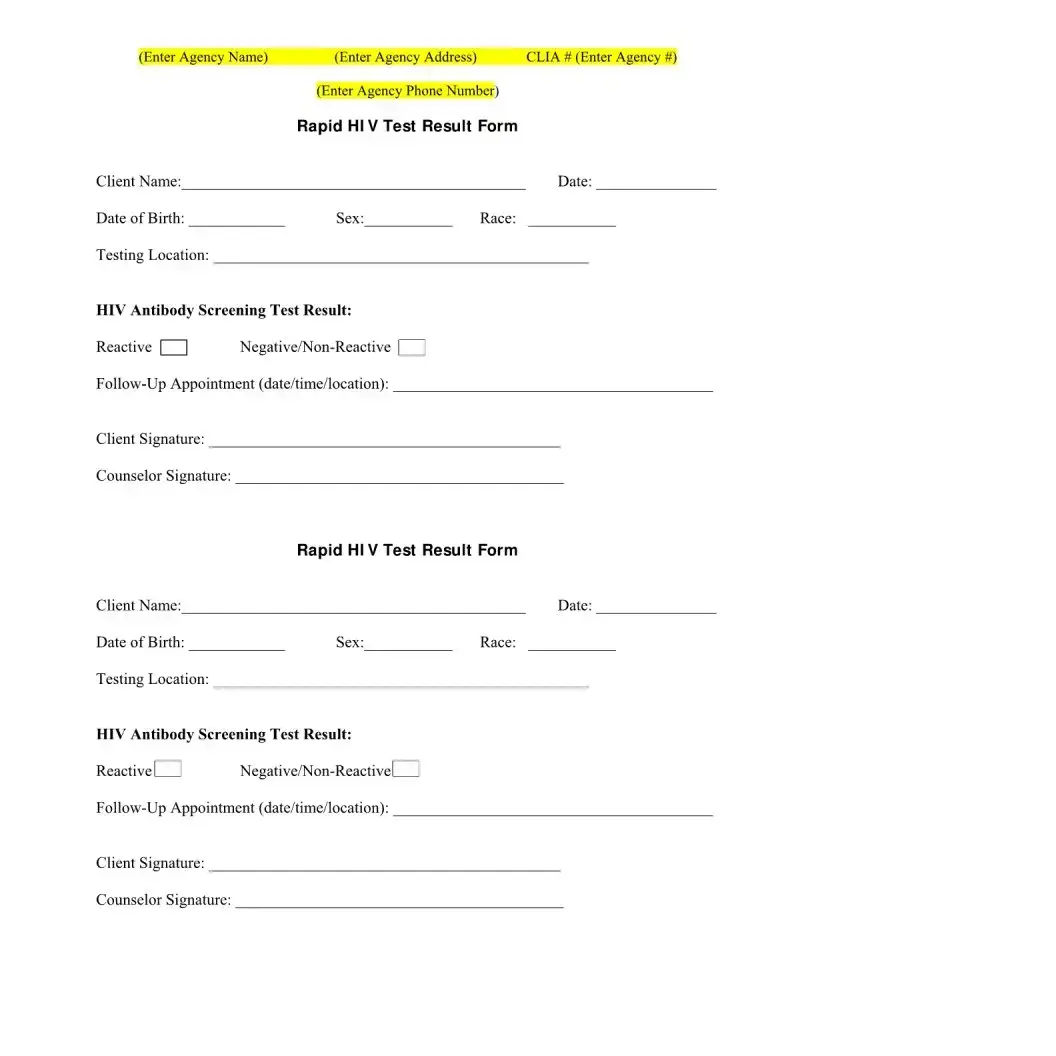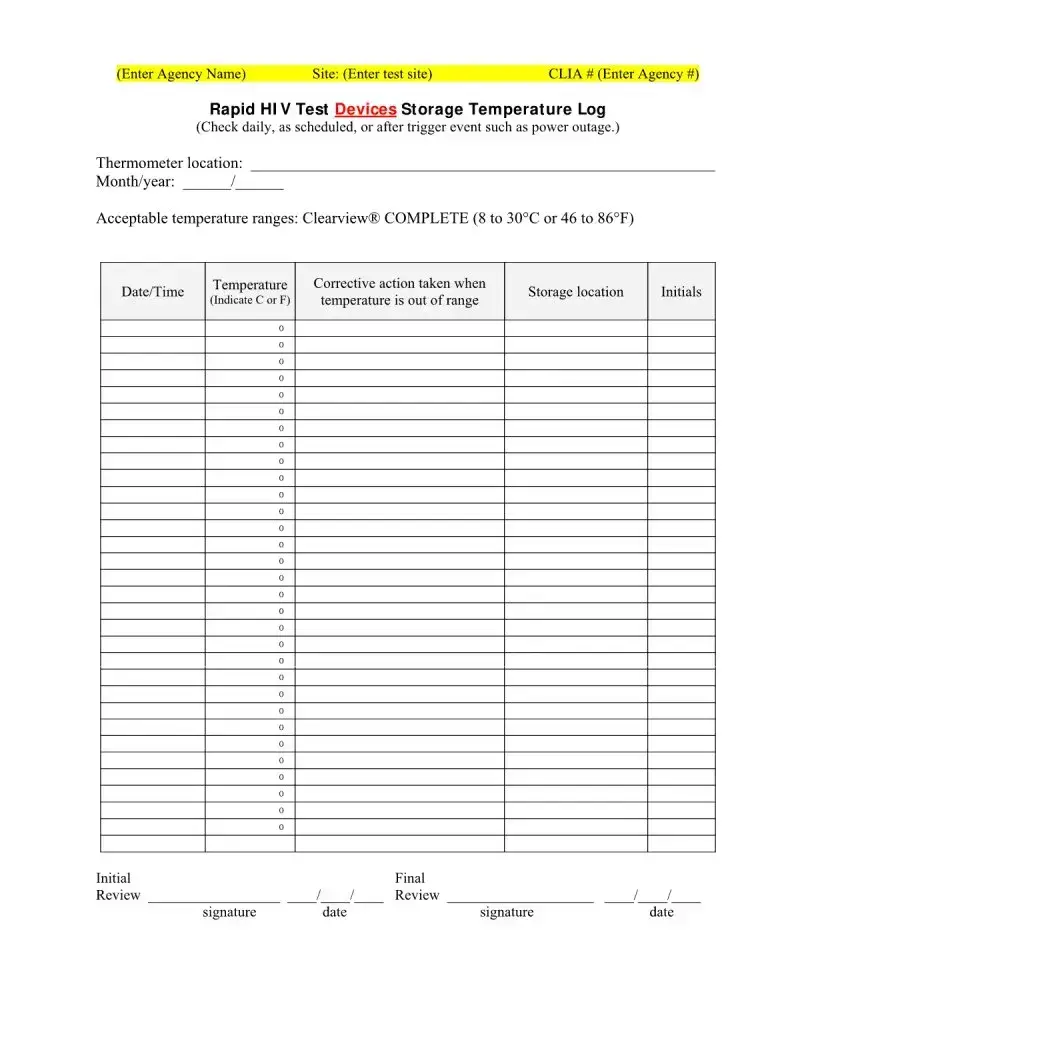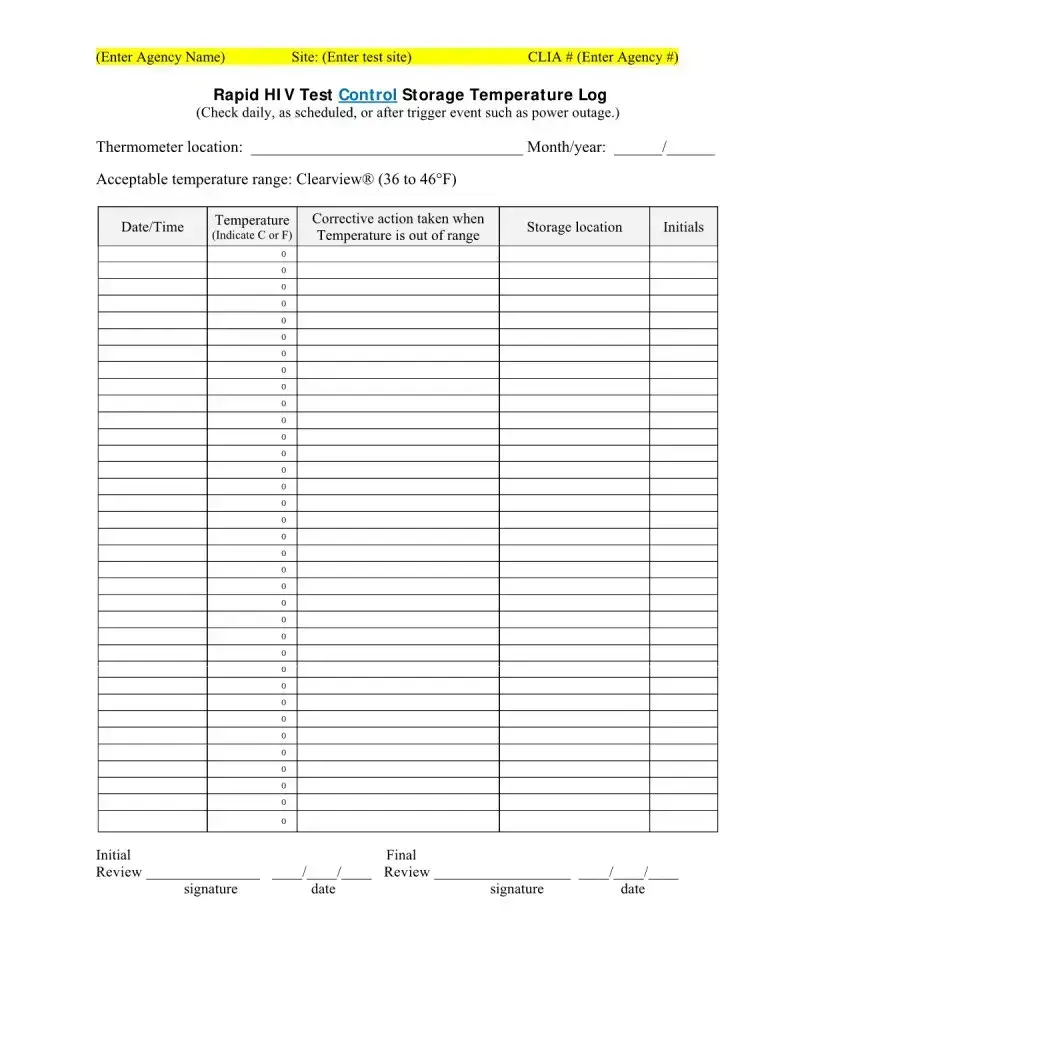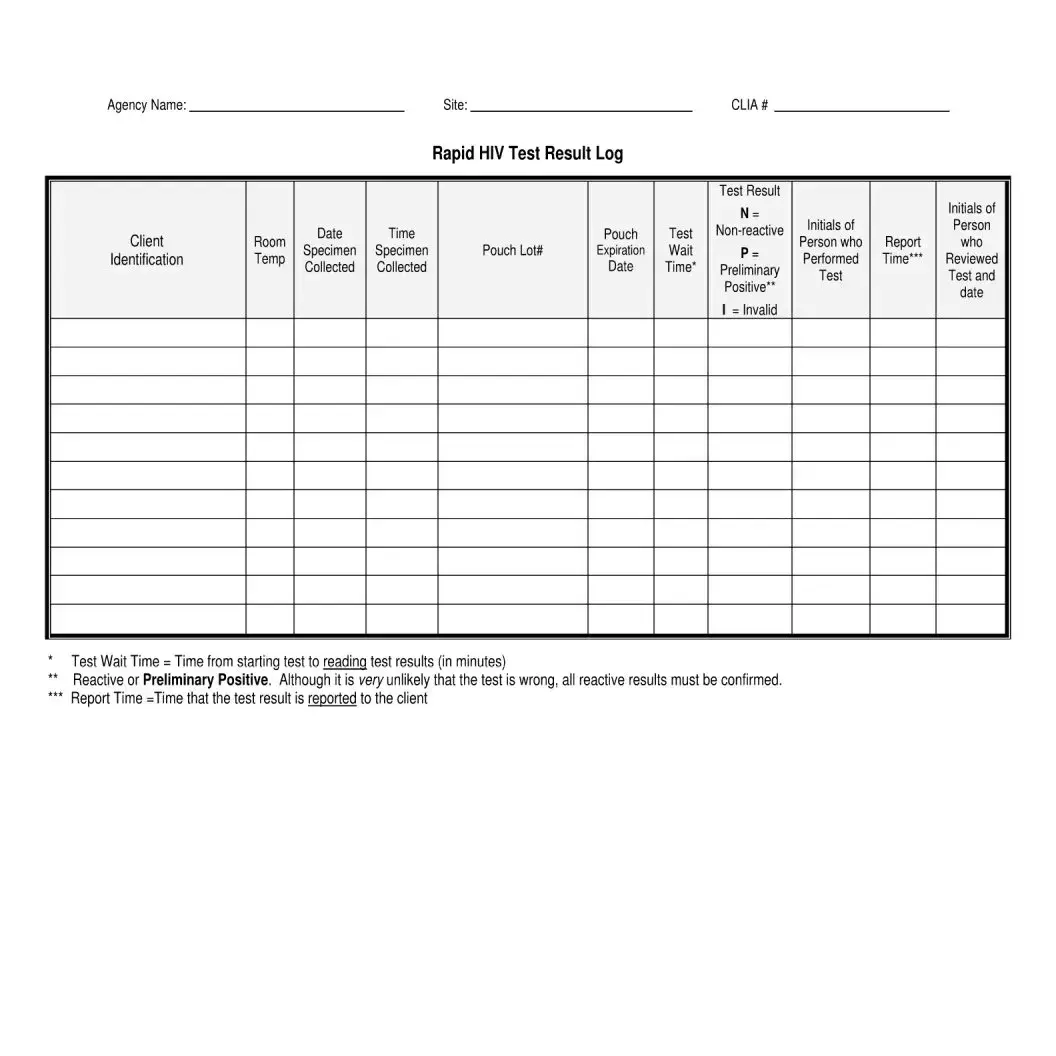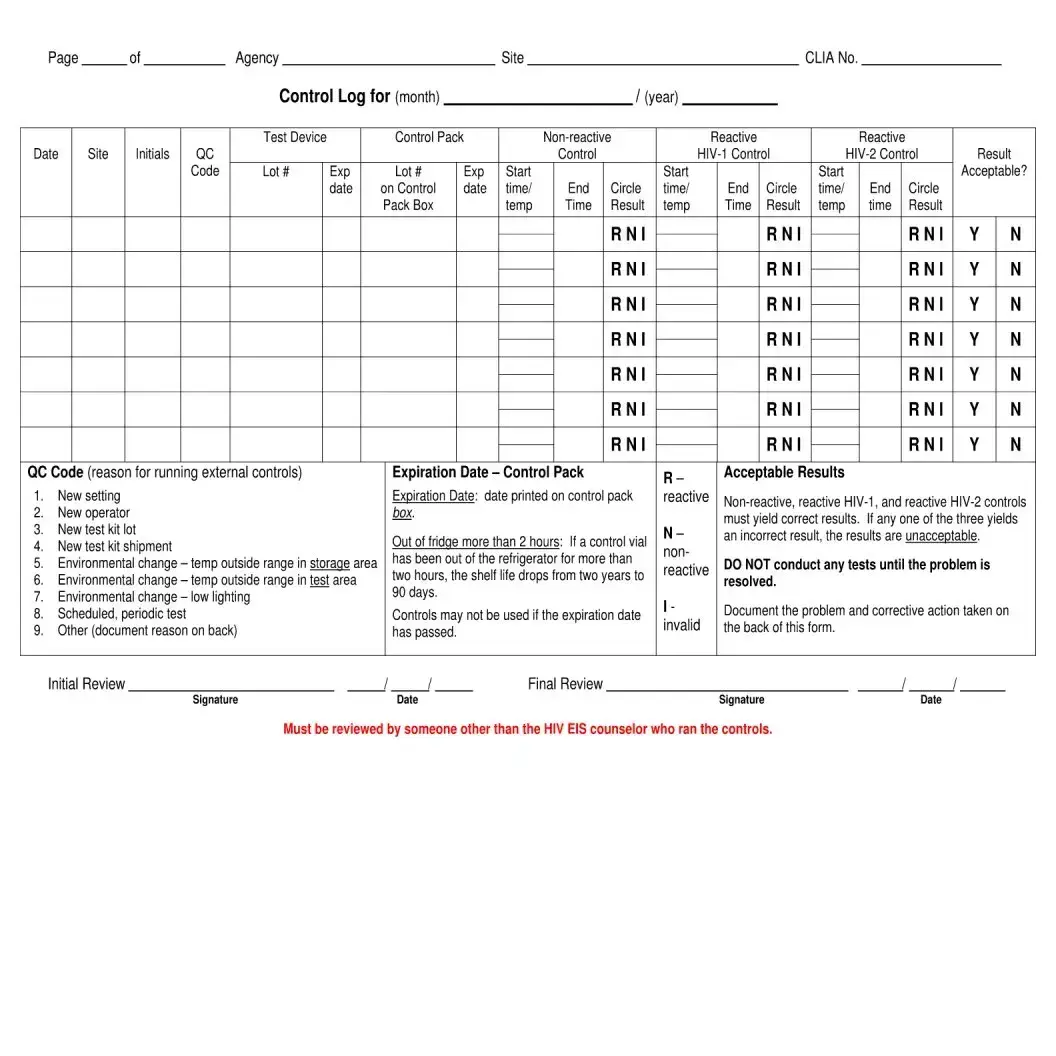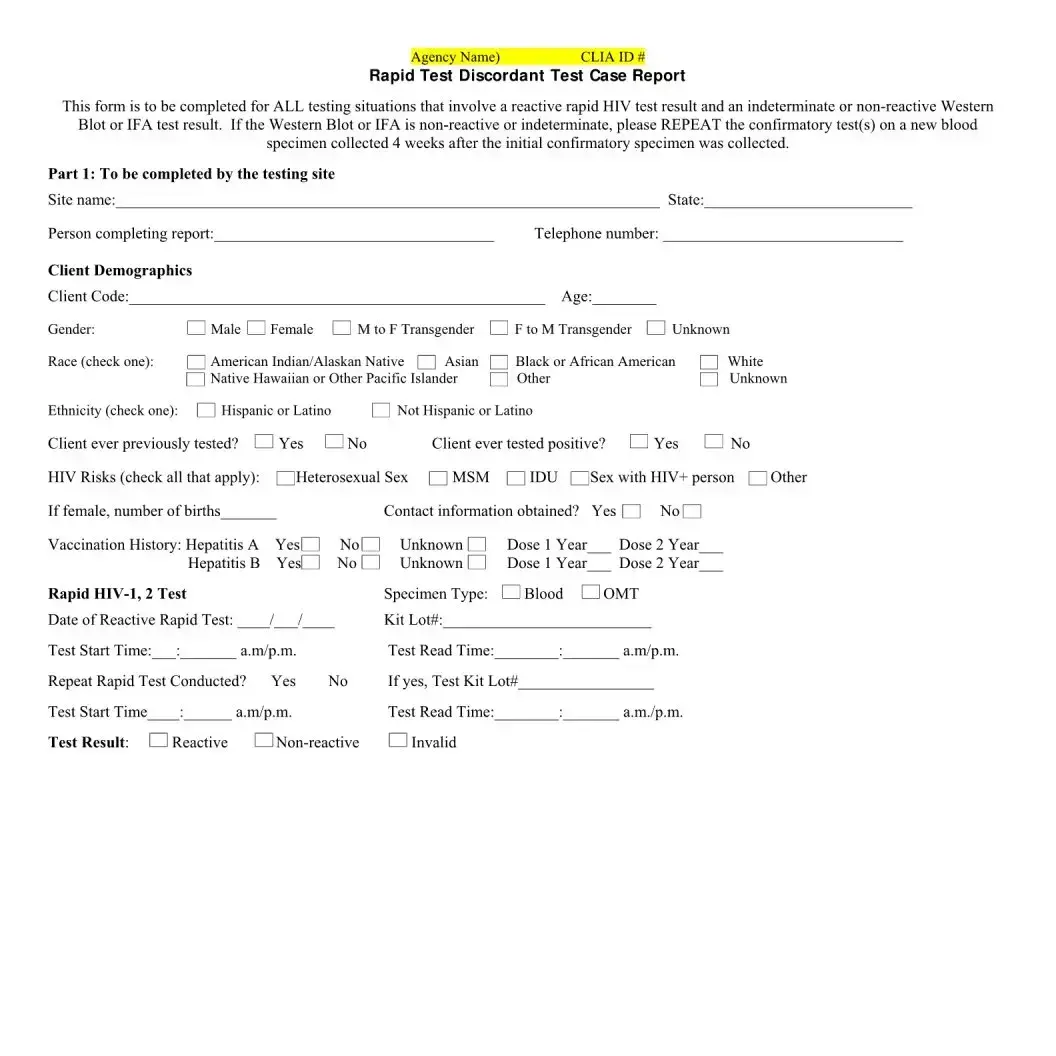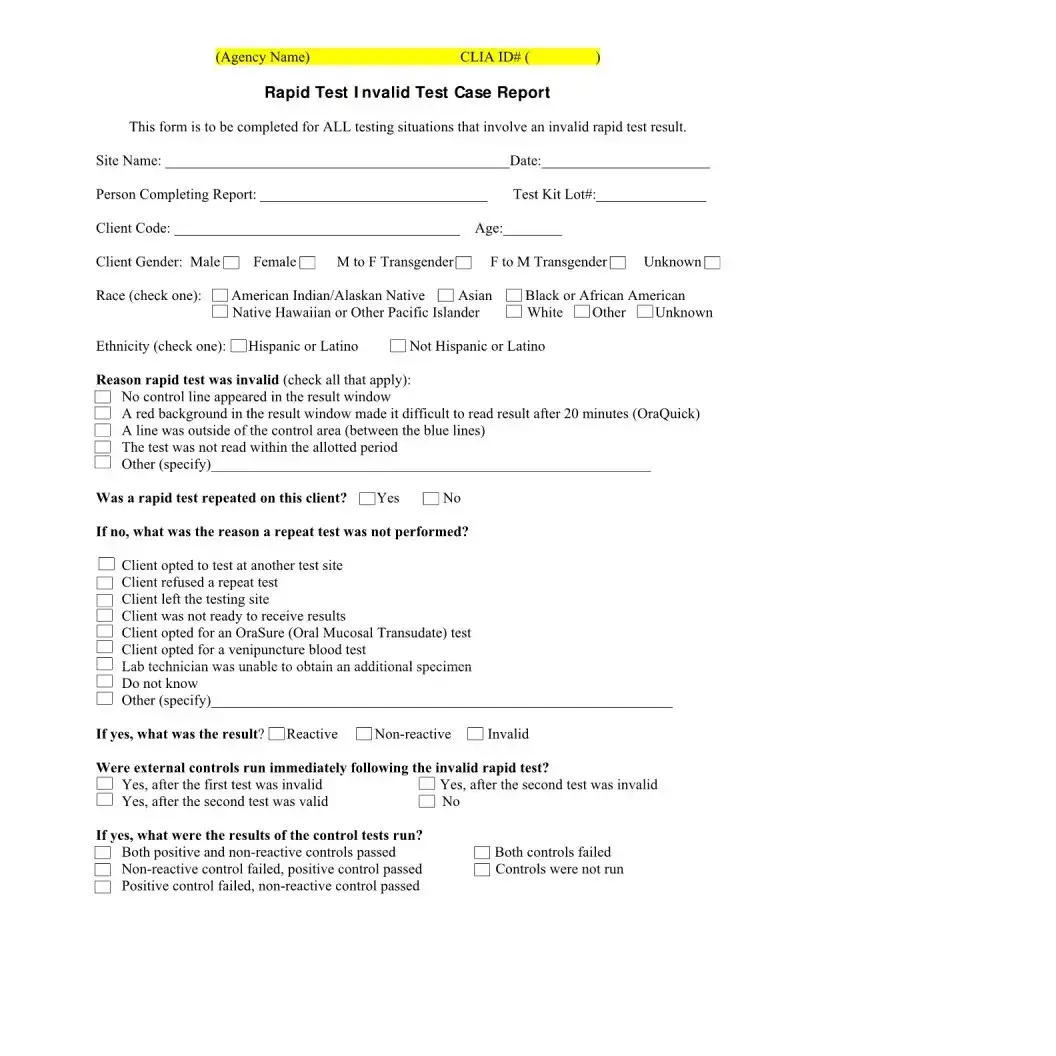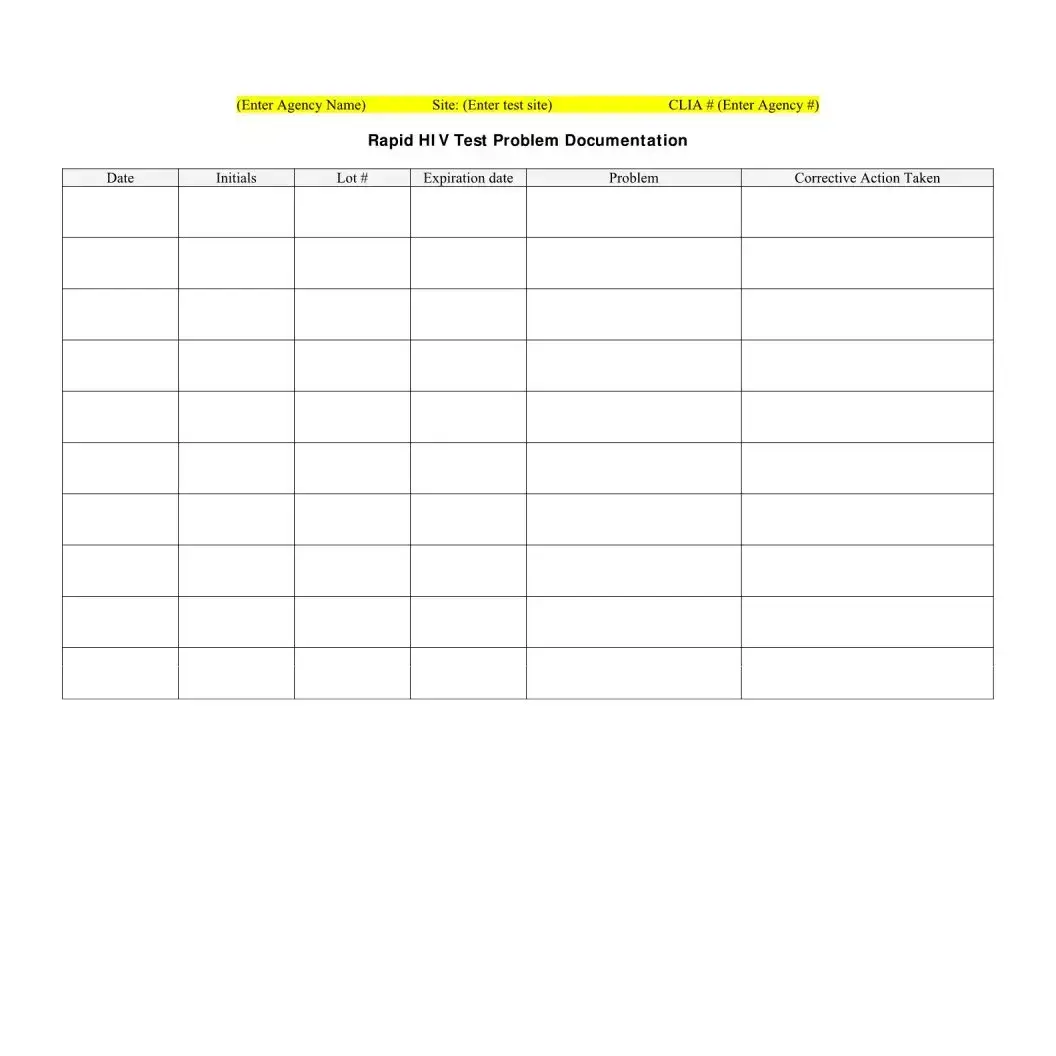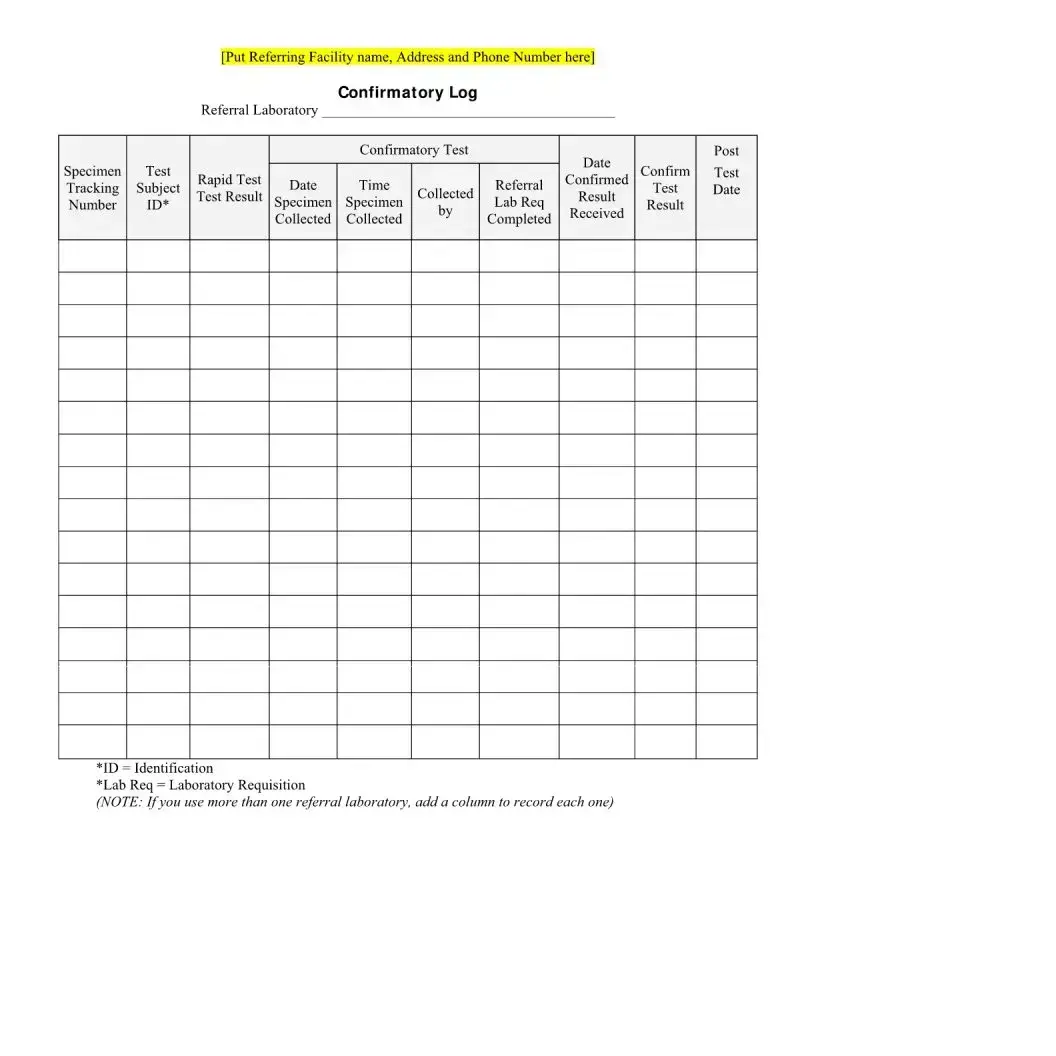Instructions on Utilizing Negative Hiv Test
Filling out the Negative HIV Test form is a straightforward process that requires a few key details to ensure everything is documented correctly. Once you've completed the form, you'll likely proceed to either receive your test results in a follow-up appointment or keep the document for your records. Below are the steps to guide you through filling out the form accurately.
- Agency Information: Start by entering the name of the agency at the top of the form. Include the agency address, CLIA number, and phone number.
- Client Details: Fill in the client’s name and date of birth. Make sure to include the date you are filling out the form.
- Sex and Race: Indicate the client's sex and race in the appropriate spaces provided.
- Testing Location: Specify where the test is being conducted by writing the testing location.
- Test Result: Circle or mark "Negative/Non-Reactive" in the section for the HIV Antibody Screening Test Result.
- Follow-Up Appointment: If applicable, note the date, time, and location for any follow-up appointments.
- Signatures: Have the client sign in the designated area to acknowledge their results. The counselor should also sign to verify the information provided.
After completing these steps, ensure that all information is clear and legible before submitting the form.
